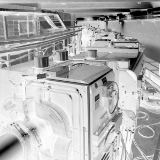Speaker
Marcoen Cabbolet
(Free University of Brussels)
Description
Since the coupling of rest-mass-having antimatter with the gravitational field of ordinary rest-mass-having matter has thus far not been established experimentally, it cannot be excluded that this coupling will be found to be negative - corresponding to a repulsion. That being said, the purpose of this talk is to give a comprehensible introduction to the fundamentally new physical principles underlying a matter-antimatter gravitational repulsion laid down in the Elementary Process Theory (EPT).
First of all, it should be clear that principles of repulsive gravity have to be formulated outside the framework of modern physics: if antimatter with positive rest mass has negative gravitational mass - and it does if repulsive gravity is a fact of nature, as shown by Morrison and Gold - then not only the Weak Equivalence Principle of General Relativity (GR) is violated, but also C-inversion, the symmetry between matter and antimatter properties of the Standard Model (SM). The extensions of GR by Santilli and Villata that predict antigravity of antimatter are incompatible with observed discreteness of the microcosmos, and Kowitt's extension of Dirac’s theory that adjusts C-inversion is incompatible with the outcome of Eötvös-like experiments.
Having settled that point, the EPT is essentially a mathematically rigorous scheme of formulas together with a physical interpretation: from that interpretation, in which new physical concepts are applied, it is clear that the EPT expresses new physical principles that differ fundamentally from GR and the SM. In the universe of the EPT, the observable process of evolution is indexed by discrete ‘degrees of evolution’, and at every such degree of evolution there are a finite number of individual processes from that degree of evolution to the next. The EPT then describes how new constituents, called: ‘phase quanta’, are formed from existing ones by discrete transitions in these individual processes: these are essentially all the same, regardless which type of interaction takes place - the EPT thus brings about unification of individual processes. Rest-mass-having entities like protons and electrons exhibit stepwise motion, alternating between a motionless particlelike state of rest and a wavelike state of motion. Gravitation takes place in a wavelike state, with normal matter having a characteristic number of normality +1, thus tending to move towards a stronger field, and antimatter having a characteristic number of normality –1, thus tending to move towards a weaker field (antigravity).
The main issue is that the EPT is not proven to satisfy the correspondence principle, although correspondence to Special Relativity (SR) has recently been shown by postulating that space-time has five dimensions (three “regular” spatial dimensions; one curled-up dimension of degrees of evolution; one temporal dimension). For any displacement $(\Delta x, \Delta y, \Delta z, \Delta n, \Delta t)$ of any particle in 5D space-time, the observed duration $\Delta t$ is then the Euclidean measure of the displacement $(\Delta x, \Delta y, \Delta z, \Delta n)$ in 3D space and degrees of evolution, with the observer-independent displacement in degrees of evolution $\Delta n$ being numerically identical to the invariant interval $\Delta s$ of SR. This result lays the groundwork for further developments towards a full proof of correspondence of the EPT.
Author
Marcoen Cabbolet
(Free University of Brussels)
